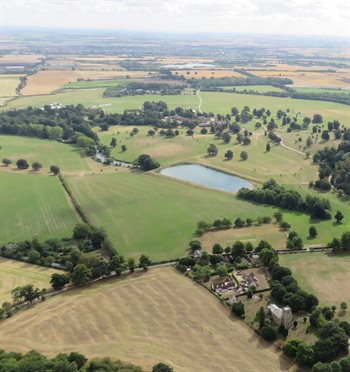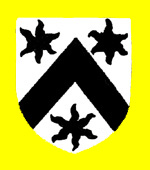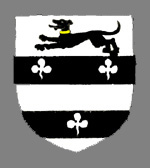Hill Manor Old Warden
Text up to the Coat of arms of the Mordaunt family was written by Margaret Roberts, Volunteer Historian, Warden Abbey Vineyard.

View east across Old Warden airfield towards lands formerly belonging to Hill Manor (Image © M. Roberts/Helicopter pilot M. Bird)
Hill manor seems to have been created from a package of assets taken from the monastic manor or Wardon and leased en bloc to a secular by one of the abbots. The first known occurrence appears in relation to tenant Richard Sheldon who died on 12 August 1494, and an inquisition of 12 November 1494 confirmed his son Richard Sheldon (24 years) as heir. Richard the younger inherited the 'manor of Hyll' comprising 3 messuages, 3 tofts, 100 acres of arable land, 10 acres of meadow and 2s in rent in Old Wardon. The assets worth 20 marks [£13 6s 8d] were held from the abbot of Wardon, but the inquisition failed to establish what service was required in return [1]. Intriguingly, this also is the earliest known mention of 'Old' Wardon.
When the will of Joan Sheldon of Hill, widow of Richard Sheldon, was proved on 2 December 1507, she had no surviving male heir and her daughter Matilda was a nun [2]. There is no reference to the abbey deriving income from Hill manor in the Valor Ecclesiasticus (1535)[3] which suggests that it had been reabsorbed into the manor of Wardon after Joan's death and the assets leased to various tenants early in the 16th century.
Wardon Abbey was suppressed on 4 December 1537 and its lands seized by Henry VIII. The Court of Augmentations accounts for FY1537/58 record Nicholas Harding as the free tenant of land and a tenement in Hill 'late Sheldon's freehold' for which he paid 18s 6d in annual rent. By inference the next two entries in the accounts relate to Hill, where Nicholas Harding had acquired 'land late Flyntes freehold' for 6s yearly and 'land late Wm Colmorthe freehold' for 15s. He also had two messuages (copyhold) worth £4 12s in Hill with all land, meadow and pasture pertaining [4]. At £6 11s 6d his holdings there amounted to just under half of the value of the late 15th century manor.

The coat of arms of the Mordaunt family
In 1550 John Harding died holding land in Hill and gave it in his will to his daughter Cecilia. She may have been the same woman as Cecilia, wife of George Mordaunt who "held the reputed manor of Hill" in 1585. Around this date a Cecilia and John Mordaunt conveyed the manor to Lewis, Lord Mordaunt and his son, Henry, who sold it in 1604 to William, afterwards, Sir William Plomer, High Sheriff of Bedfordshire who died holding the manor in 1626.

The Palmer family coat of arms
In 1627 Robert Plomer conveyed Hill Manor to Robert Palmer for £1,000. The manor then stayed in the Palmer family until 1713. In that year Thomas Palmer sold the manor to Sir George Byng, Lord High Admiral.

The Byng family coat of arms
The manor remained in the Byng family until at least 1762 but by 1824 as in the hands of Robert, Third Lord Ongley. This is the last mention of the manor to be found in the historical record. The manor's seat was Hill House.
Endnotes:
[1] Calendar of Inquisitions Post Mortem, Vol 1. Henry VII (1898), p.471 (1104).
[2] 'Bedfordshire Wills Proved in the Prerogative Court of Canterbury 1383-1548', ed. M. McGregor, BHRS, 58 (1979), 85 (66).
[3] W. Dugdale, Monasticon Anglicanum, ed. J. Caley, H. Ellis and B. Bandinel, 6 vols. in 8 (London, 1817-49), vo. 5, pp. 369-70.
[4] 'Court of Augmentations Accounts for Bedfordshire - I', ed. Y. Nicholls, BHRS, 63 (1984), 78 (104) and 80 (106).